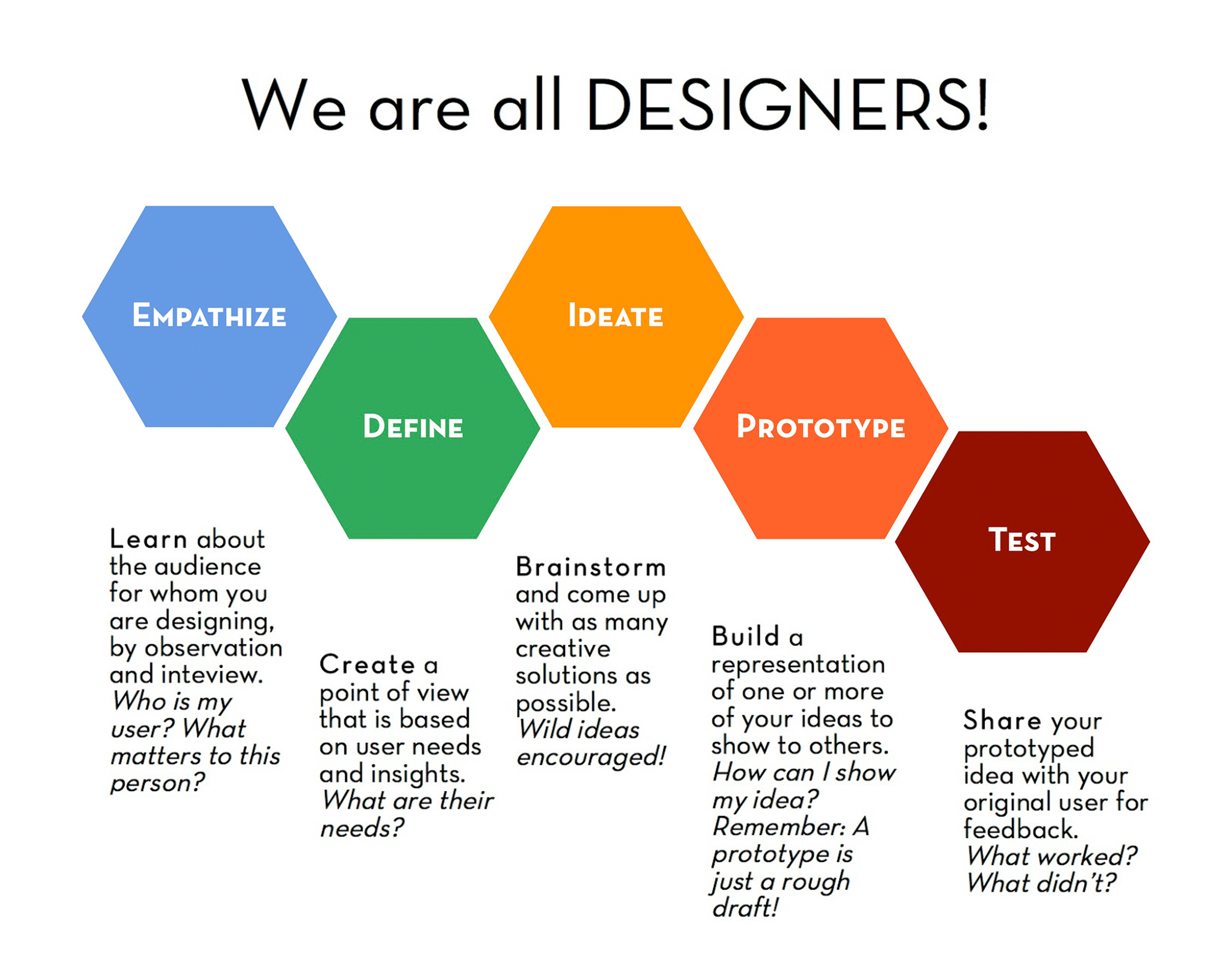As an introduction to the principles of user experience design, also commonly known as UX Design, we had to immerse ourselves in the “Design Sprint: Design Thinking Crash Course” assignment. This intensive exercise took us through the design thinking process and allowed us to gain insight into its integral role in user experience design.
To start, let’s answer the following question: what is design thinking? Design thinking is a human-centered methodology to problem solving and innovation that prioritizes the users. It has an iterative, structured framework that involves the following five stages: emphasizing with users, defining their problems ideating solutions, prototyping, and testing. This approach is associated with user experience design where the goal is to create products or services that cater to the end user’s needs. While user experience design is about creating meaningful user interactions, design thinking serves as a guide to ensure those interactions resonate with the user.
Design Thinking in Action
One of the most impactful components of this design thinking assignment was the personalized task of interviewing our assigned partner about their educational experience at Quinnipiac. This crash course exercise was not just about tapping into our creative potential but also about improving our empathetic listening skills.
Empathize:
The first stage saw us diving into the narrative of our partner. By actively listening, our goal was to understand their feelings and the challenges they faced during their educational journey at Quinnipiac. From this, we had to find a way to improve their educational experience.
Define:
After gathering insights from our interviews, we proceeded to define the challenges our partner faced, or the problems. Once identified, we had to define the problem by filling out the following statement: BLANK is a challenge for BLANK because BLANK. From here, we had to create a How Might We (HMW) statement based on this problem. My HMW Statement was: How Might We communicate to and organize the courses better for students in a way that helps them organize their chosen path? Overall, this stage is important because instead of jumping right into creating possible solutions, we took a step back to pinpoint the primary challenges faced and needs of our partner.
Ideate:
With a clear understanding of the issues at hand, we had to do some research first and find out how other universities addressed similar issues. Then, our goal was to brainstorm potential solutions and challenge ourselves to think outside of the box.
Prototype:
After showing our partner the potential solutions we had come up with in the previous stage, we had to refine the one they liked the most and create a prototype.
Test:
The final stage involved us presenting our prototype to our partner for feedback. The iterative nature of design thinking became apparent here as we refined, rethought, and even had to revisit earlier stages based on this feedback.
In the end, this entire exercise or “crash course” was a great example of how design thinking is not just about the products but about the journey of empathy, experimentation and collaboration. By placing human experiences at the center of our design approach, we were better equipped to ideate solutions that were practical and meaningful.
Here is a link to my presentation: Design Sprint: Design Thinking Crash Course Presentation
